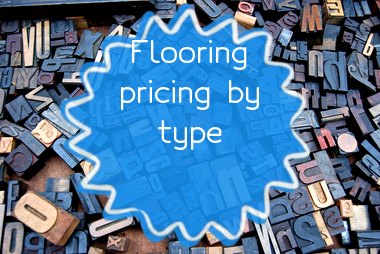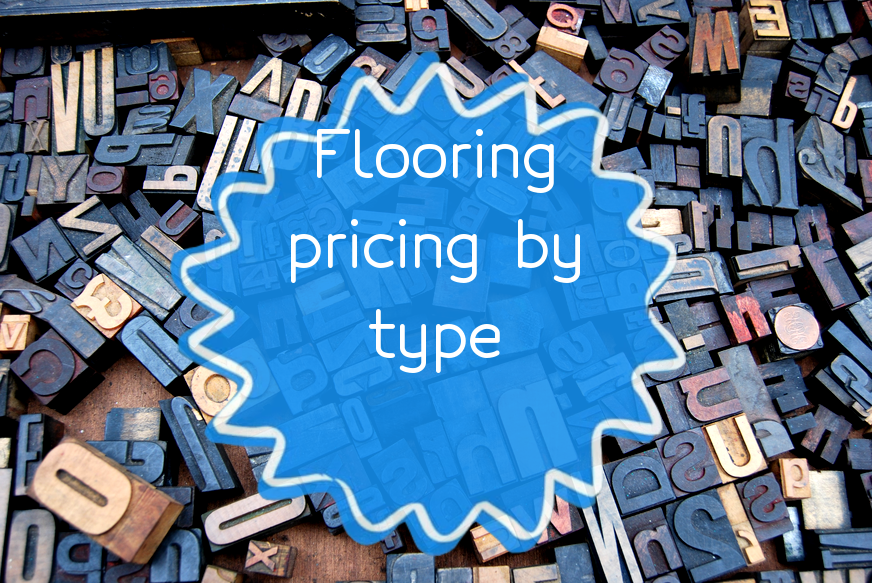- 1. Hardwood Flooring: Hardwood flooring is one of the most highly sought-after flooring options. It is also one of the most expensive. The cost varies depending on the type of wood, but on average, it can cost between $8 and $15 per square foot.
- 2. Laminate Flooring: Laminate flooring is a popular choice for those on a budget. It is made to resemble hardwood or stone and is much cheaper than these materials. The average cost of laminate flooring ranges from $2 to $8 per square foot.
- 3. Vinyl Flooring: Vinyl flooring is a popular choice for bathrooms and kitchens, where moisture is a concern. It is also very durable and easy to clean. The average cost of vinyl flooring ranges from $1.50 to $5 per square foot.
- 4. Carpet: Carpet is one of the most cost-effective flooring options. It is soft, comfortable, and available in many styles and colors. The cost of carpet ranges from $1 to $7 per square foot.
- 5. Tile Flooring: Tile flooring is a popular choice for bathrooms, kitchens, and entryways. It is durable, easy to clean, and available in many styles and colors. The cost of tile flooring ranges from $2 to $15 per square foot.
Keep in mind that these prices are approximate, and the actual cost of flooring will vary depending on the location, labor costs, and other factors. It's essential to do your research and get quotes from multiple flooring contractors before choosing a flooring option.
How Much Does New Flooring Cost?
Here are some general estimates for various flooring types:
- 1Hardwood flooring: Mid-range quality hardwood flooring can cost anywhere from $4 to $12 per square foot, with installation costs ranging from $4.50 to $8.50 per square foot.
- 2Laminate flooring: Laminate flooring is typically less expensive than hardwood and can cost anywhere from $1 to $3 per square foot for materials, and $3 to $7 per square foot for installation.
- 3Vinyl flooring: Vinyl flooring is also an affordable option and can cost anywhere from $1 to $5 per square foot for materials, and $1 to $3 per square foot for installation.
- 4Tile flooring: Tile flooring can range from $1 to $15 per square foot for materials and $3 to $7 per square foot for installation, depending on the type of tile and complexity of the design.
It is important to research and compare prices from different suppliers and contractors to find the best value and quality for your budget. Additionally, consider factors such as upkeep and durability when making your flooring decision as this can affect long-term costs.
Cheapest Type of Flooring
The cheapest type of flooring can vary depending on a few factors such as location, availability, and the type of property it's being used in.
However, some of the cheapest types of flooring include:
- 1. Vinyl: Vinyl flooring is an affordable and durable option that's easy to clean and install. It's suitable for high traffic areas and is available in a variety of designs and styles.
- 2. Laminate: Laminate flooring is another cost-effective option that's easy to install and maintain. Although it's not as durable as some other flooring options, it's suitable for low to medium traffic areas.
- 3. Carpet: Carpet can be a cheap flooring option, especially if you choose a basic material and installation. It's warm and comfortable underfoot, but can be more challenging to clean and maintain over time.
- 4. Concrete: If you're looking for an ultra-cheap flooring option, concrete is it. It's sturdy, versatile, and perfect for industrial or minimalist decor. It's also environmentally friendly.
In conclusion, vinyl, laminate, carpet, and concrete are some of the cheapest types of flooring available. However, it's essential to consider the pros and cons of each option and choose the one that best suits your needs and budget.
DIY flooring installation
DIY flooring installation refers to the process of installing a new floor in your home or office by yourself. There are various types of flooring materials available in the market, such as hardwood, tile, laminate, vinyl, and carpet, and each of them has its own unique installation method.
The first step in a DIY flooring installation is to select the appropriate flooring material according to your budget, room size, and purpose. Next, you need to prepare the subfloor by cleaning, leveling, and removing any debris or old flooring materials. Once the subfloor is ready, you can start laying down the flooring planks or tiles, following the manufacturer's installation guidelines.
Some flooring materials, such as hardwood or tile, require more skill and precision to install, including cutting and shaping the planks or tiles to fit around the room's corners and edges. Laminate and vinyl flooring, on the other hand, are easier to install and require fewer tools and skills.
Overall, DIY flooring installation can be a cost-effective way of upgrading your home's interior design, but it requires some skill, patience, and attention to detail to achieve a professional-looking finish. If you are not confident about your DIY skills, it's always better to seek professional help to avoid costly mistakes and ensure a long-lasting and durable floor.
Floor repair cost vs. new flooring cost
Floor repair cost typically refers to the cost of fixing or restoring a damaged section of flooring, whereas new flooring cost refers to the cost of completely replacing old or damaged flooring with new materials.
The cost of floor repairs will depend on the extent and type of damage to the flooring, as well as the materials used for the repair. For example, repairing a small section of hardwood flooring may cost a few hundred dollars, while repairing a larger area with water damage may cost up to several thousand dollars.
On the other hand, the cost of new flooring will depend on the type and quality of flooring chosen, as well as the size of the area being covered. Options range from low-cost materials such as vinyl or laminate flooring to higher-end options like hardwood or tile. The total cost of new flooring will include not just the cost of materials, but also installation fees and any additional expenses such as removing old flooring or preparing the subfloor.
In general, if the damage to existing flooring is minor, the cost of repairs may be significantly lower than the cost of completely replacing the flooring with new materials. However, if the damage is extensive or the flooring is old and in poor condition, investing in new flooring may be the more cost-effective option in the long run.
Does New Flooring Increase Property Values?
In general, updating or upgrading flooring can positively impact a property's value if done correctly. New flooring can improve the appearance and aesthetics of a property, making it more appealing to potential buyers or renters. Additionally, updated flooring may offer increased durability and functionality, which can be an attractive feature to homeowners.
However, the impact of new flooring on property value depends on several factors such as the type of flooring used, the quality of installation, the price paid for the flooring, the market demand for the type of flooring, and the local real estate market's condition. Therefore, while new flooring may add value to a property, it might not be a significant factor in some cases.
Just one more thing: if you liked the article, please like us on social media and share this article with friends.



